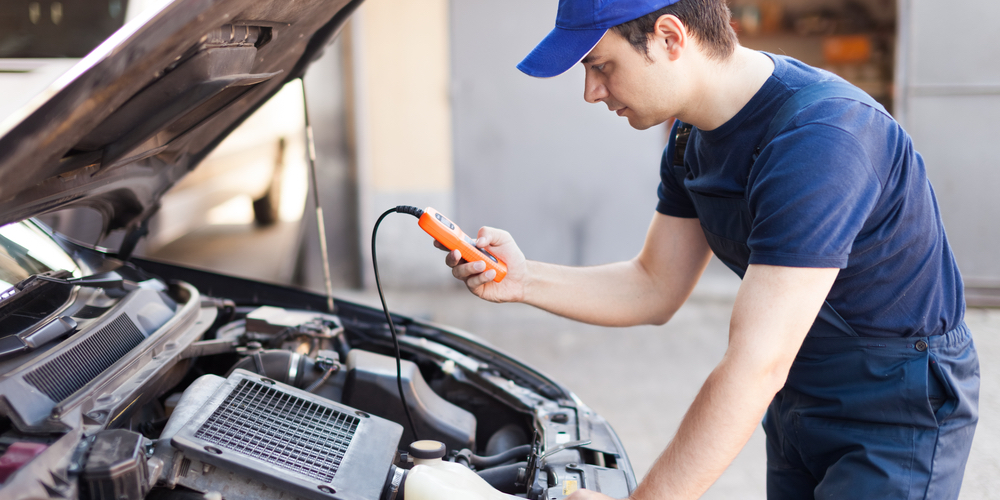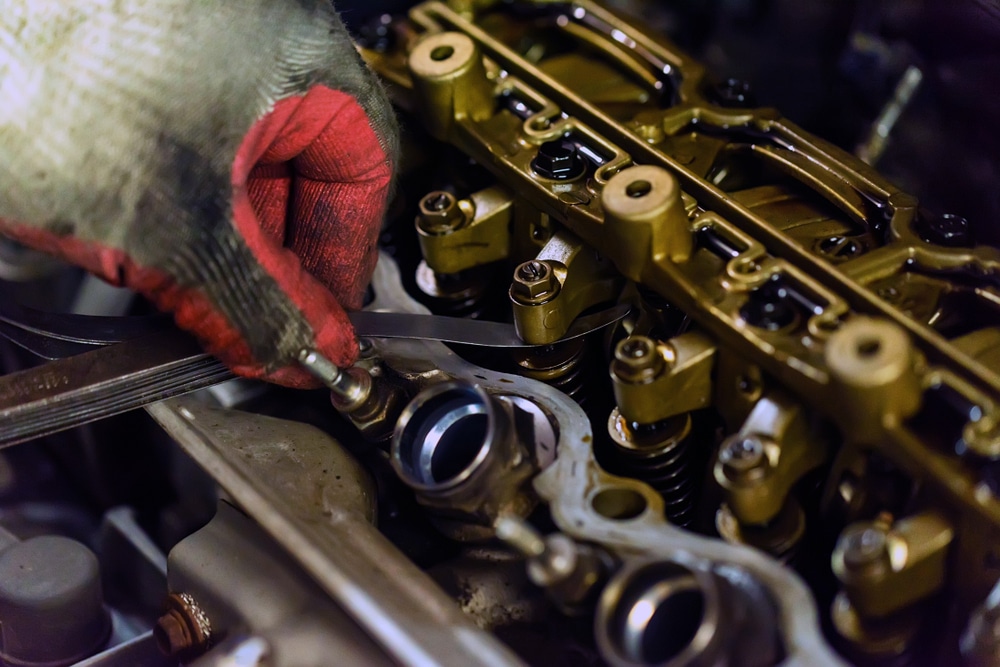Have you ever filled up your tank only to see that pesky check engine light illuminate on your dashboard? It’s enough to make any driver anxious.

You might be wondering if the gas you just pumped could be the culprit behind this sudden warning.
Bad gas can indeed cause your check engine light to come on. Contaminated fuel or even overfilling your tank can trigger this warning signal.
Your car’s computer is sensitive to changes in the fuel system, and it’s not shy about letting you know when something’s amiss.
Don’t panic just yet, though.
Sometimes the solution is as simple as tightening your gas cap.
That’s right – a loose cap can cause vapors to escape, tricking your car into thinking there’s a problem with the fuel system.
So before you start imagining costly repairs, give that cap a good twist and see if it solves the mystery.
Key Takeaways
- A loose or faulty gas cap can trigger the check engine light
- Overfilling your tank may cause fuel system issues and activate the warning
- Regular maintenance can prevent many common causes of check engine light activation
Understanding Your Check Engine Light
Your car’s Check Engine Light (CEL) is like a cryptic message from your vehicle. It’s trying to tell you something, but without the right tools, it’s hard to decipher. Let’s decode this automotive mystery together.
The Role of the OBD-II System

Your car’s brain is called the OBD-II system. It’s like a watchful parent, constantly monitoring your vehicle’s vital signs.
When something’s amiss, it flicks on that pesky CEL. This system has been standard in cars since 1996, so unless you’re cruising in a classic, you’ve got one.
The OBD-II checks everything from your engine’s performance to emissions.
It’s not just looking for catastrophic failures – even small issues can trigger the light.
Think of it as your car’s way of saying, “Hey, can we talk?”
Common Triggers for CEL Illumination
Your CEL isn’t always doom and gloom. Sometimes, it’s just a loose gas cap playing tricks on you. Yes, really! A poorly sealed fuel system can trigger that ominous glow.
Other common culprits include:
- Faulty oxygen sensors
- Misfiring engines (your car’s version of hiccups)
- Aging spark plugs
- A clogged catalytic converter
Remember, your CEL is like a chatty friend – it doesn’t always mean trouble, but you should probably pay attention. Ignoring it is like ghosting that friend. Eventually, it might lead to bigger problems – and nobody wants that drama in their driveway!
Fuel Issues and the CEL

Bad gas and fuel-related problems can trigger your check engine light, wreaking havoc on your vehicle’s performance. Let’s dive into the nitty-gritty of these pesky issues and how they mess with your ride.
Bad Gas Explained
Ever filled up your tank and suddenly felt like your car’s been possessed? You might be dealing with bad gas, my friend. This fuel faux pas can come from water contamination, old fuel, or even the wrong octane rating.
Your engine’s not picky, but it sure doesn’t like this stuff.
Bad gas can lead to poor fuel economy and make your engine run rougher than a cat in a washing machine.
In severe cases, it might even cause your engine to stall or misfire.
Symptoms of Fuel-Related Engine Troubles
When your car’s sipping on some sketchy fuel, it’ll let you know. Here are some telltale signs:
- Rough idling (your car’s shaking like it’s cold)
- Sluggish acceleration (feels like you’re dragging an anchor)
- Engine misfires (it’s stuttering worse than a nervous teenager)
- Check engine light illumination (your dashboard’s new night light)
If you’re experiencing these symptoms, don’t panic.
First, check your gas cap – a loose one can trigger the CEL faster than you can say “oops.”
If that’s not it, you might need to run some fuel system cleaner through your tank or, in worst-case scenarios, get that tank drained.
The Impact of a Faulty Gas Cap
That pesky gas cap might seem insignificant, but it can cause quite a ruckus in your car’s systems. A faulty or loose gas cap can trigger your check engine light and mess with your vehicle’s emissions control.
How a Loose Gas Cap Affects Your Vehicle
Ever filled up your tank and noticed the check engine light come on shortly after? That little gas cap might be the culprit.
When it’s not tight enough, it allows fuel vapors to escape. Your car’s computer detects this leak and throws a fit, lighting up your dashboard like a Christmas tree.
But it’s not just about the annoying light.
A loose gas cap can actually hurt your wallet too.
Those escaping vapors mean you’re losing fuel, and we all know how precious that liquid gold is these days.
You might also notice your car’s performance take a hit.
Without proper pressure in the fuel system, your engine might run a bit rough.
It’s like trying to drink a milkshake with a leaky straw – frustrating and inefficient.
The Gas Cap and Emissions Control
Your gas cap plays a crucial role in your car’s emissions control system.
It’s not just there to keep your fuel from sloshing out. Think of it as a cork in a wine bottle, but for your car’s fuel system.
When it’s working properly, your gas cap helps maintain the right pressure in your fuel tank.
This pressure is important for your car’s evaporative emission control (EVAP) system.
The EVAP system captures fuel vapors and burns them in the engine instead of letting them escape into the atmosphere.
A faulty gas cap can throw a wrench in this whole process.
It can cause your EVAP system to fail its self-test, triggering that pesky check engine light. Your car might even fail an emissions test because of it.
So next time you fill up, give that gas cap an extra twist. Your car (and the environment) will thank you for it!
Emissions Components and Engine Light Issues
Your car’s emissions system is a complex network of parts working together to keep your ride clean and efficient. When something goes awry, that pesky check engine light might just pop on to say hello.
Oxygen Sensors: A Closer Look
Ever wonder what those O2 sensors are up to? They’re like tiny chemists, constantly analyzing your exhaust gases.
When they detect something fishy, they’ll tattle to your car’s computer faster than you can say “emissions test.”
Faulty oxygen sensors can trick your engine into thinking it needs more or less fuel than it actually does.
This can lead to poor fuel economy and increased emissions. Yikes!
If your check engine light comes on and you’re getting worse gas mileage, it might be time to give those O2 sensors a once-over.
They’re not too expensive to replace, and your wallet will thank you at the pump.
The Importance of a Healthy Catalytic Converter
Your catalytic converter is like the superhero of your emissions system. It transforms harmful pollutants into less harmful emissions faster than you can say “save the planet!”
A failing catalytic converter can trigger that dreaded check engine light and cause all sorts of problems. You might notice:
- Reduced acceleration
- Poor fuel economy
- A rotten egg smell (yuck!)
Don’t ignore these signs!
A damaged catalytic converter can be pricey to replace, but it’s crucial for keeping your car running cleanly and efficiently.
Other Emissions Systems to Keep an Eye On
Your car’s emissions system is like a well-orchestrated band. When one instrument is out of tune, the whole performance suffers. Here are a few other players to watch:
- EGR valve: Recirculates exhaust gases to reduce emissions
- EVAP system: Prevents fuel vapors from escaping
- PCV valve: Regulates crankcase pressure
These components can all trigger the check engine light if they’re not working properly.
Regular maintenance and prompt attention to warning signs can help keep your emissions in check and your wallet happy.
Maintenance Tips to Prevent Engine Light Woes
Keep that pesky check engine light at bay with some simple preventative care. A little elbow grease goes a long way in avoiding costly repairs down the road.
Regular Checks for Common Issues
Start with the basics, folks. Check your gas cap after every fill-up. A loose cap can trigger that dreaded light faster than you can say “mechanic.”
Next up, your air filter.
A clogged filter’s like trying to breathe through a straw – not fun for you or your engine. Give it a look-see every 15,000 miles or so.
Don’t forget about your fuel filter. This little guy’s working overtime to keep nasties out of your engine. Replace it every 20,000-40,000 miles, depending on your ride.
Your mass airflow sensor’s another potential troublemaker. Keep it clean and happy, and it’ll return the favor by keeping your engine running smoothly.
When to Consult Technical Service Bulletins
Sometimes, your trusty steed might have a quirk the manufacturer’s already figured out. That’s where Technical Service Bulletins (TSBs) come in handy.
These bulletins are like cheat codes for your car. They can alert you to common issues before they become big problems. Check for TSBs during your regular maintenance visits.
If you’re experiencing recurring issues, especially with your oil pressure sensor or car battery, a quick TSB search could save you time and money.
Don’t be shy about asking your mechanic to look into them.
Frequently Asked Questions
Bad gas can wreak havoc on your ride. Let’s dive into some common queries about subpar fuel and its effects on your trusty vehicle.
What symptoms can you expect when your car is having trouble with subpar gasoline?
Your car might start acting like a drama queen. You’ll notice poor acceleration, rough idling, and maybe even some stalling.
It’s like your car had too much to drink at the last pit stop.
Don’t be surprised if your fuel economy takes a nosedive too. Bad gas can turn your efficient ride into a gas-guzzling monster faster than you can say “fill ‘er up!”
How does one go about testing their vehicle for the presence of poor-quality gas?
You don’t need to be Sherlock Holmes to detect bad gas. Start by checking your gas cap – a loose one can trigger that pesky check engine light.
If that’s not it, take your car for a spin and pay attention to how it behaves. Sputtering, hesitation, or a loss of power could be your car’s way of saying, “Hey, I don’t like this fuel!”
What specific diagnostic trouble codes might pop up if there’s a bad batch of gasoline in the tank?
Your car’s computer might throw a fit with codes like P0300 (random misfire) or P0171 (system too lean). These codes are like your car’s way of sending an SOS about its fuel situation.
Remember, these codes aren’t always a bad gas guarantee. But they’re definitely worth investigating, especially if they pop up right after a fill-up at that sketchy new station.
After filling up, why would there be no gas cap yet the check engine light turns on?
Ah, the mysterious case of the missing gas cap! Sometimes, it’s not about what’s there, but what’s not. If you forgot to put the cap back on after filling up, your car might throw a tantrum.
Modern vehicles are pretty sensitive to fuel vapor leaks. No cap means those vapors are escaping, and your car’s computer isn’t happy about it.
It’s like leaving the fridge door open – things are gonna get messy.
What steps should a person take if they suspect their vehicle’s performance woes stem from a questionable gas station visit?
First things first, don’t panic! If you think you’ve been served a bad batch of go-juice, top off your tank with some premium fuel from a reputable station. This can help dilute the bad stuff.
If problems persist, it might be time to bite the bullet and get a fuel system cleaning. Think of it as a detox for your car – out with the bad, in with the good!
Can old or contaminated fuel be the culprit behind an illuminated engine light in your dashboard?
You bet your dipstick it can!
Old fuel can break down and leave gunk in your system, making your engine work harder than a one-legged man in a butt-kicking contest.
Contaminated fuel is even worse.
Water, dirt, or other nasties can cause misfires, poor performance, and yes, that dreaded check engine light. It’s like feeding your car a mud pie and expecting it to run smoothly.
